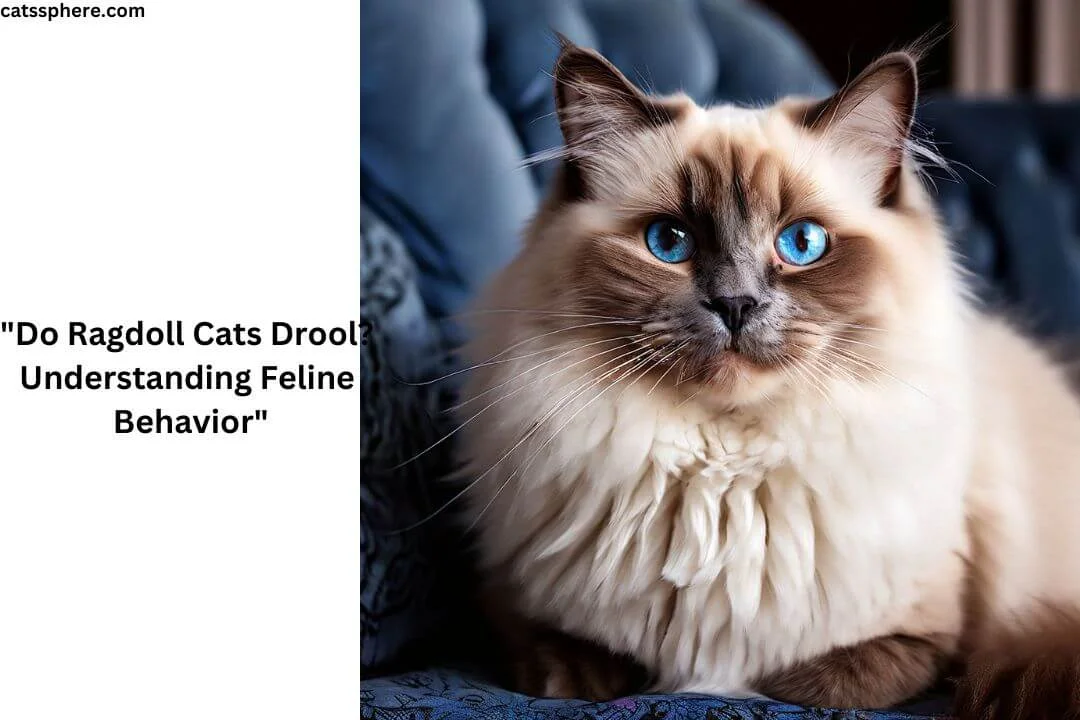Introduction
Ragdoll cats, known for their striking blue eyes, silky fur, and affectionate nature, are a beloved breed among cat enthusiasts. Originating in the 1960s, these cats have quickly gained popularity due to their gentle temperament and unique characteristics. However, like all pets, understanding their behavior is crucial for their well-being. One behavior that often concerns Ragdoll owners is drooling. This article explores the reasons behind Do Ragdoll Cats Drool?, its health implications, and how to address this issue.
Ragdoll Cats: An Overview
Physical Characteristics
Ragdoll cats are large, with males typically weighing between 15 to 20 pounds and females between 10 to 15 pounds. They have a semi-long, plush coat that comes in various colors and patterns, including colorpoint, mitted, and bicolor. Their most distinguishing feature is their deep blue eyes, which add to their enchanting appearance.
Personality Traits
Ragdolls are often described as “puppy-like” due to their friendly and sociable nature. They enjoy human companionship, are typically gentle with children, and often follow their owners around the house. Unlike many other cat breeds, Ragdolls are known for their relaxed demeanor, even when being handled or picked up.
Common Behaviors
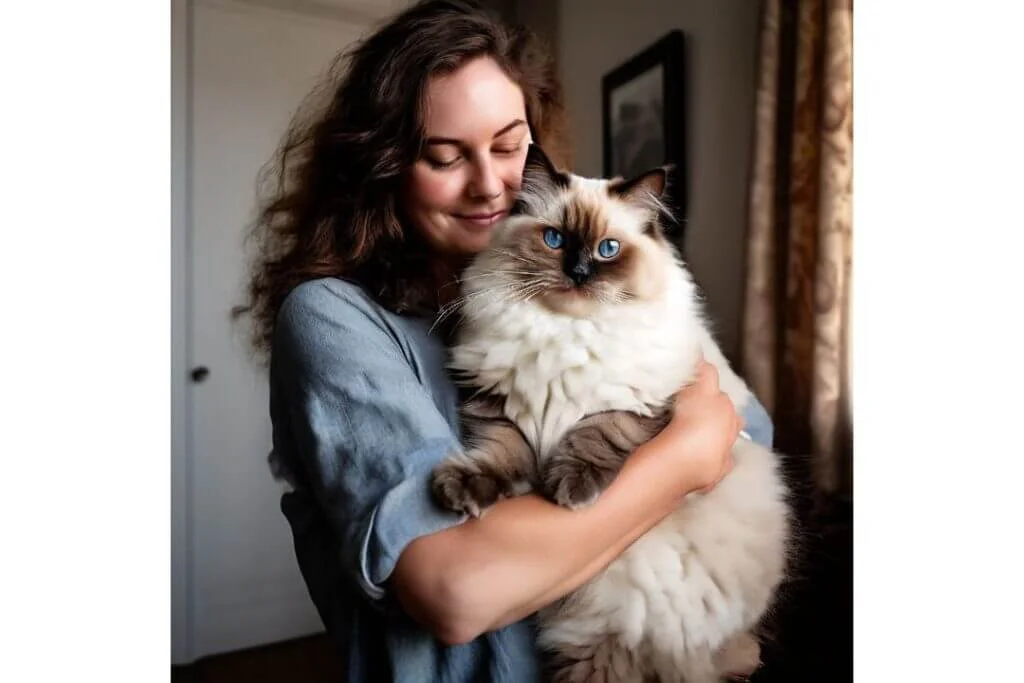
Ragdolls are not particularly active cats but enjoy interactive play and cuddling with their owners. They are also known for their tendency to go limp when held, hence the name “Ragdoll.” This breed is generally quiet but can be quite vocal when they need attention or food.
Understanding Drooling in Cats
What is Drooling?
Drooling in cats involves the excessive production of saliva, which can lead to saliva dripping from the mouth. While occasional drooling can be normal, especially during purring or anticipation of food, persistent or excessive drooling can indicate underlying health issues.
Why Do Cats Drool?
Cats drool for various reasons, including dental problems, gastrointestinal issues, exposure to toxins, and stress. Understanding the specific cause of drooling is essential to address the issue effectively.
Ragdoll Cats and Drooling
Are Ragdoll Cats Prone to Drooling?
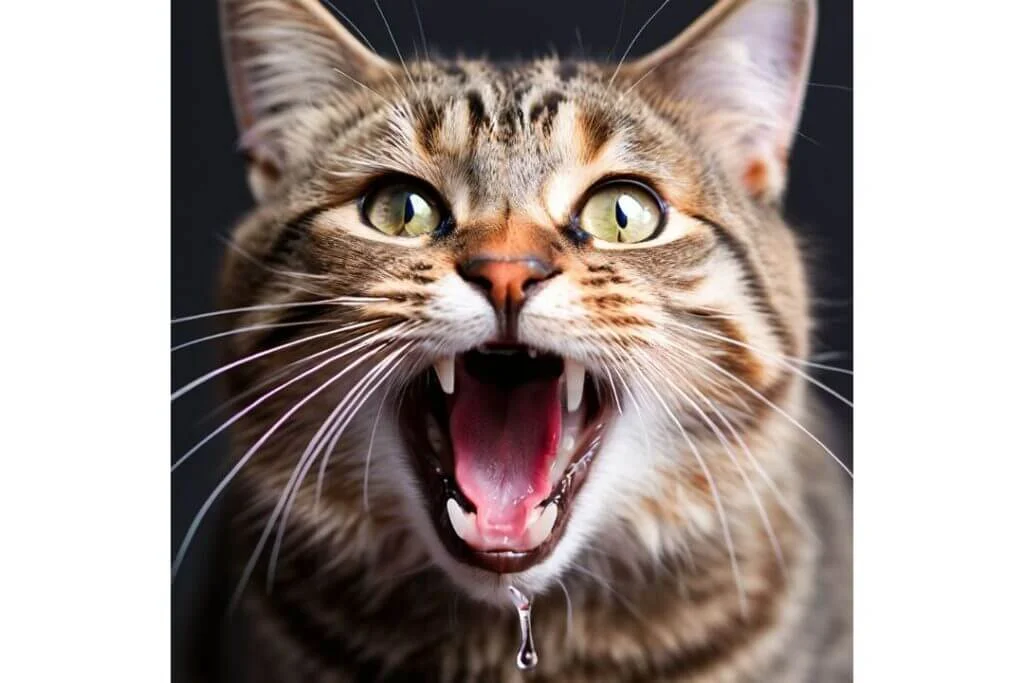
Ragdoll cats are not particularly prone to drooling compared to other breeds. However, like all cats, they can drool due to certain health conditions or environmental factors.
Common Reasons for Drooling in Ragdolls
Ragdolls might drool due to dental diseases, gastrointestinal disturbances, respiratory infections, anxiety, or exposure to toxic substances. Each of these factors can affect their salivary glands, leading to excessive drooling.
Health Implications of Drooling
When is Drooling Normal?
Drooling can be considered normal when it occurs infrequently and is associated with specific activities such as purring, eating, or feeling relaxed. For instance, some cats drool slightly when they are very content or kneading.
When to Worry About Drooling
Persistent or excessive drooling should raise concern. If drooling is accompanied by other symptoms such as bad breath, difficulty eating, vomiting, lethargy, or changes in behavior, it is essential to seek veterinary advice promptly.
Causes of Drooling in Ragdoll Cats
Nausea and Gastrointestinal Problems
Nausea, whether from dietary indiscretions, gastrointestinal infections, or other causes, can lead to excessive drooling. Cats may drool before vomiting or when experiencing nausea from other underlying issues.
Respiratory Infections
Upper respiratory infections, common in cats, can cause drooling due to mouth ulcers, nasal congestion, and difficulty swallowing. These infections often require medical treatment to resolve.
Exposure to Toxins
Ingesting or coming into contact with toxic substances such as certain plants, chemicals, or medications can cause drooling. Symptoms of poisoning can vary and may include drooling, vomiting, diarrhea, and lethargy.
Dental Issues
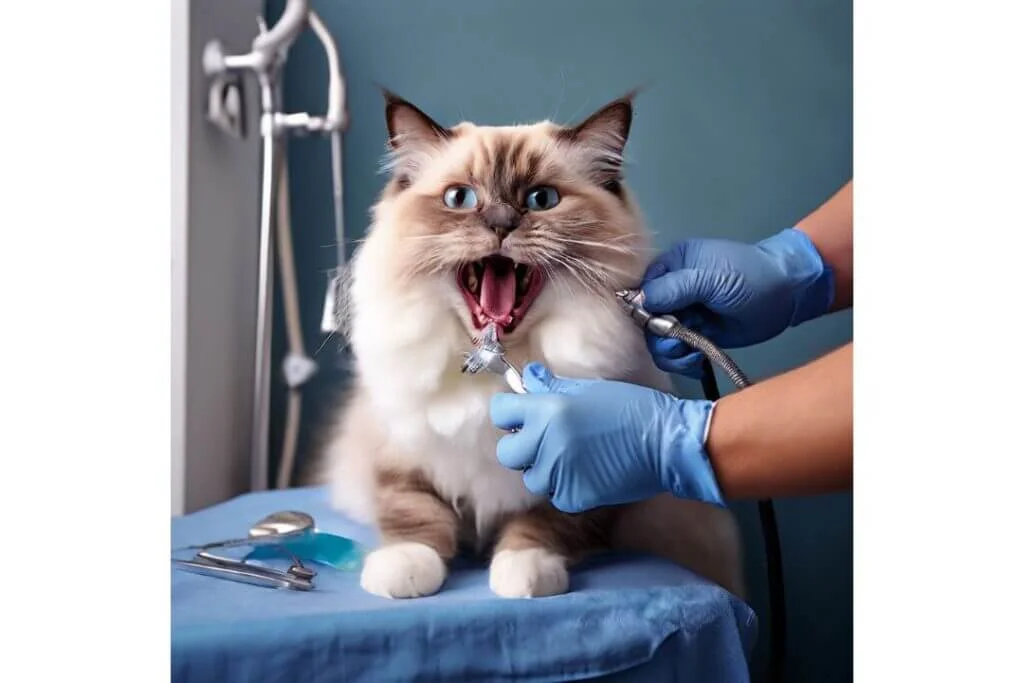
Dental diseases, including gingivitis, periodontitis, and tooth abscesses, are common causes of drooling in cats. These conditions can cause pain and inflammation, leading to increased saliva production.
Anxiety and Stress
Stressful situations such as moving, changes in household dynamics, or the presence of unfamiliar animals can lead to drooling. Anxiety-induced drooling is typically accompanied by other signs of stress like hiding, vocalization, or changes in appetite.
Other Medical Conditions
Other conditions such as liver disease, kidney failure, or neurological disorders can also result in drooling. It is crucial to have a thorough veterinary examination to determine the exact cause.
Diagnosing Drooling Issues
Physical Examination
A comprehensive physical examination by a veterinarian is the first step in diagnosing the cause of drooling. This includes checking the mouth, teeth, and gums for any abnormalities.
Dental Check-ups
Dental examinations, including X-rays, are essential to identify issues such as broken teeth, abscesses, or other dental diseases that might be causing drooling.
Blood Tests and Imaging
Blood tests and imaging techniques like ultrasounds or X-rays help identify systemic issues such as liver or kidney diseases that could contribute to drooling.
Behavioral Analysis
Observing and analyzing the cat’s behavior can provide insights into whether stress or anxiety is contributing to the drooling. Understanding the context in which drooling occurs can aid in diagnosis.
Treatment Options
Addressing Dental Problems
Treatment of dental issues involves professional cleaning, tooth extractions, or other procedures to alleviate pain and infection. Regular dental care is crucial for preventing future problems.
Managing Gastrointestinal Issues
Gastrointestinal problems require dietary management, medication, or other treatments based on the underlying cause. Addressing these issues can significantly reduce drooling.
Treating Infections
Respiratory infections often require antibiotics or antiviral medications. Supportive care, such as fluids and nutritional support, may also be necessary.
Reducing Stress and Anxiety
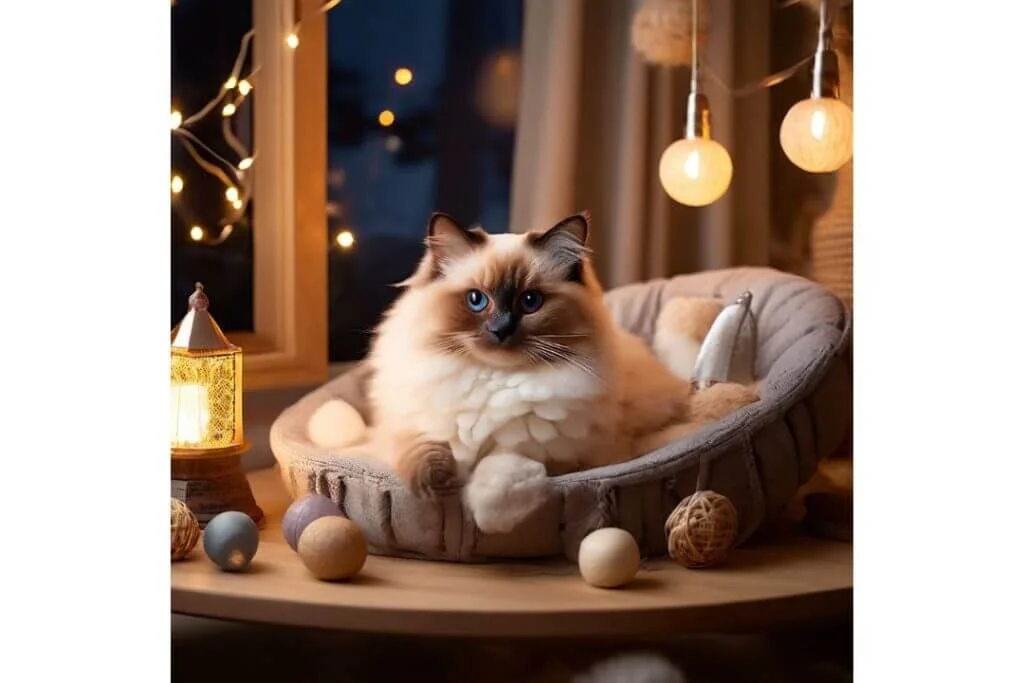
Creating a calm environment, using pheromone diffusers, and providing enrichment activities can help reduce stress-induced drooling. In some cases, medication may be necessary.
Other Medical Treatments
Depending on the underlying cause, treatments may vary. It is essential to follow the veterinarian’s recommendations and ensure regular follow-ups.
Preventive Measures
Regular Vet Visits
Regular veterinary check-ups help in early detection and treatment of health issues, preventing complications that might lead to drooling.
Dental Hygiene for Cats
Brushing your cat’s teeth, providing dental treats, and scheduling professional cleanings are vital for maintaining dental health and preventing drooling due to dental diseases.
Safe Environment
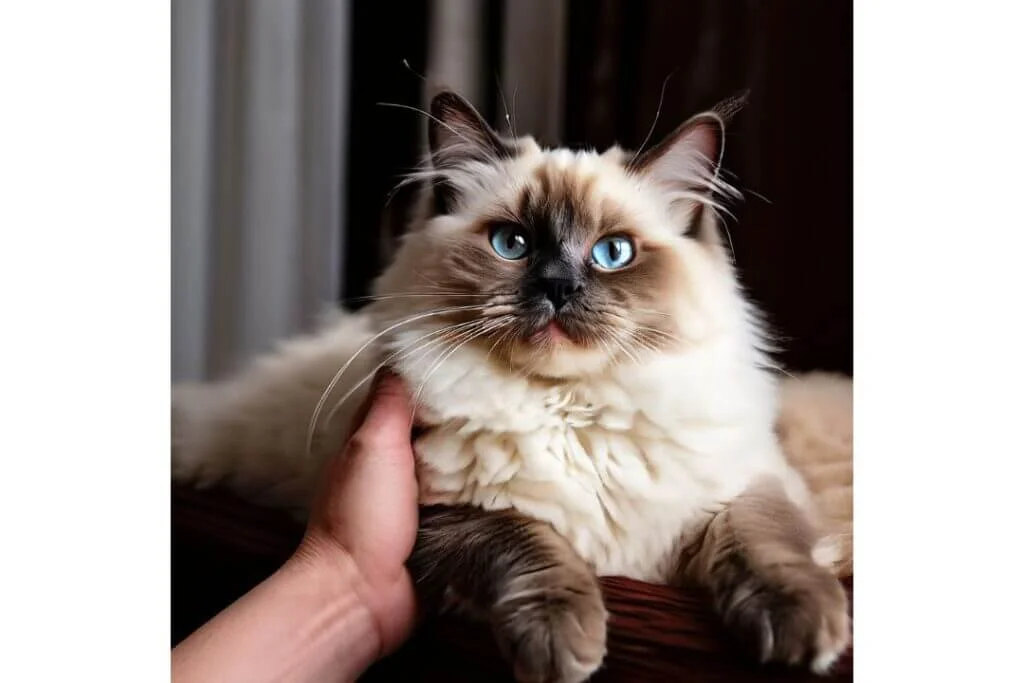
Ensuring that your home is free from toxic substances and dangerous items can prevent accidental poisoning and subsequent drooling.
Stress Management
Maintaining a stable and enriching environment helps reduce anxiety and stress in cats, preventing stress-related drooling.
Are Ragdoll Cats Hypoallergenic? Detailed Guide 2024
“Can a Ragdoll Cat Be Left Alone?”A Detailed Guide 2024
Balinese vs. Ragdoll Cat: A Comprehensive Comparison
Personal Stories and Case Studies
Case Study 1: Dental Issue in a Ragdoll
A six-year-old Ragdoll named Bella began drooling excessively and showing signs of discomfort while eating. A veterinary examination revealed severe gingivitis and a tooth abscess. After professional dental treatment and tooth extraction, Bella’s drooling ceased, and she returned to her normal, playful self.
Case Study 2: Stress-Induced Drooling
Oliver, a four-year-old Ragdoll, started drooling and hiding after the arrival of a new puppy in the household. Recognizing the stress, his owner created a safe, quiet space for Oliver and gradually introduced him to the puppy. With time and patience, Oliver’s drooling decreased as he adjusted to the new family member.
Expert Insights
Veterinarian Advice on Drooling
Dr. Jane Smith, a feline specialist, emphasizes the importance of regular dental care and prompt veterinary visits if drooling occurs. She notes that while occasional drooling can be normal, persistent drooling often indicates an underlying issue that needs addressing.
Tips from Ragdoll Breeders
Experienced Ragdoll breeders suggest maintaining a stress-free environment and being vigilant about dental health. They recommend high-quality diets and regular vet check-ups to ensure the overall health of Ragdoll cats.
Frequently Asked Questions (FAQs)
Is drooling common in Ragdoll cats?
Drooling is not particularly common in Ragdoll cats; however, it can occur due to a variety of reasons, including health issues or stress. While occasional drooling might be normal, especially if your cat is purring contentedly or anticipating a meal, it’s important to pay attention if the drooling becomes frequent or excessive. Monitor the context and frequency of drooling, and take note of any other accompanying symptoms, such as changes in behavior, appetite, or energy levels.
How can I prevent my Ragdoll from drooling?
Preventing drooling in your Ragdoll cat involves a few proactive steps:
- Regular Dental Care: Brush your cat’s teeth regularly and provide dental treats or toys that help keep their teeth clean. Schedule professional dental check-ups and cleanings with your veterinarian.
- Stress-Free Environment: Create a calm and stable environment for your cat. Minimize changes in their routine and provide a safe space where they can retreat if they feel stressed.
- Timely Veterinary Check-ups: Regular vet visits are crucial for early detection of potential health issues. Your vet can identify and treat conditions that might lead to drooling before they become serious problems.
- Addressing Health Issues Promptly: If you notice any signs of illness, such as changes in eating habits, behavior, or physical condition, seek veterinary advice immediately. Prompt treatment of underlying health issues can prevent excessive drooling.
What should I do if my Ragdoll starts drooling excessively?
If your Ragdoll starts drooling excessively, it is essential to take the following steps:
- Consult a Veterinarian: Schedule an appointment with your vet as soon as possible. Provide detailed information about when the drooling started, its frequency, and any other symptoms you’ve noticed.
- Follow the Vet’s Recommendations: Your veterinarian might perform a physical examination, dental check-up, blood tests, or imaging studies to diagnose the underlying cause. Follow their advice and treatment plan diligently.
- Monitor Your Cat: Keep a close eye on your cat’s behavior, eating habits, and overall well-being. Note any changes or improvements after starting treatment.
- Ensure a Comfortable Environment: Make sure your cat has a comfortable and stress-free environment to aid in their recovery. Provide plenty of fresh water, nutritious food, and a quiet place to rest.
Conclusion: Do Ragdoll Cats Drool?
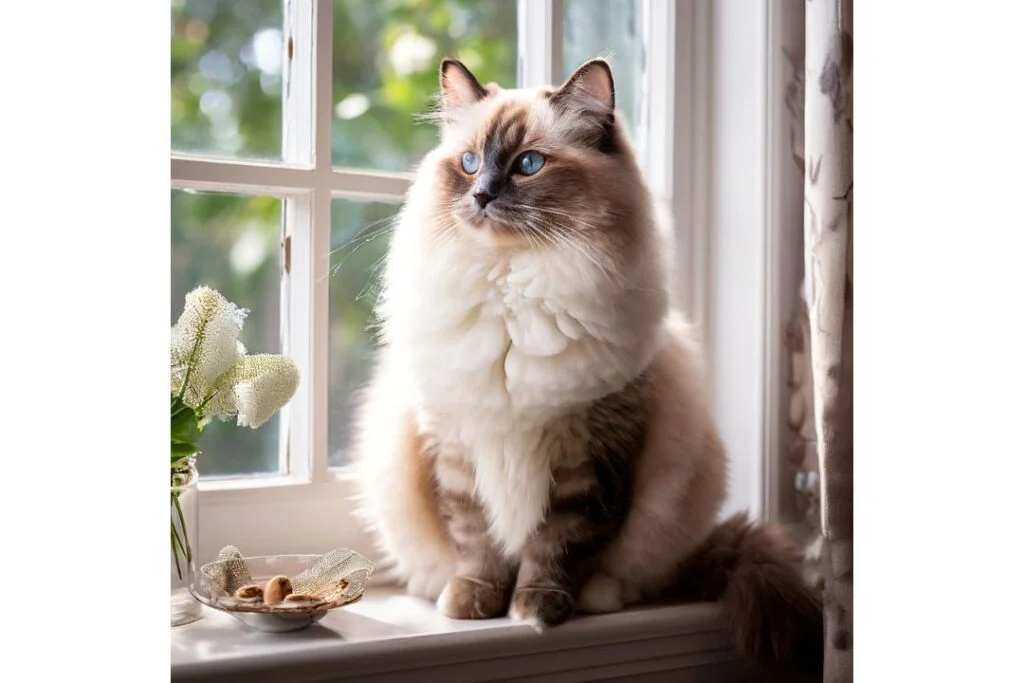
Drooling in Ragdoll cats, while not always a cause for concern, can indicate underlying health issues that require attention. By understanding the potential causes and ensuring regular veterinary care, you can help maintain your cat’s health and well-being. Monitoring your Ragdoll for signs of drooling and addressing any issues promptly can prevent discomfort and more serious health problems. Staying vigilant and proactive in your cat’s care will ensure that your Ragdoll remains happy, healthy, and free from the discomfort associated with excessive drooling.

